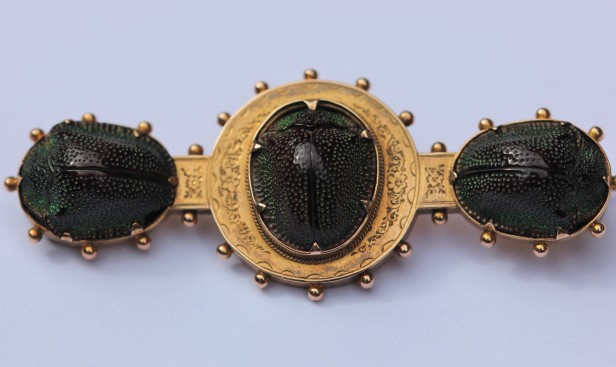It is not surprising that antique jewellery can look dirty and tarnished. We have no idea how its various owners have stored it – carefully wrapped in cloth or in jewellery cases or tumbled up with other pieces. Both gold and silver can show tarnish and discolouration. Many people assume that gold will not tarnish but, unless it is 24 carat gold, which is really too soft for jewellery, then the alloy that is contained in 18ct, 15ct and so on can discolour.
Silver was often the preferred setting for diamonds and other gemstones in the Georgian and early Victorian periods and can discolour. Silver jewellery became very popular in the Victorian period following the discovery of silver in Nevada in the late 1850s, together with an ever growing middle class who had money to spare. However, it began to fall out of favour at the end of the 19th century due to increased pollution. The sulfur dioxide in the air tarnished the silver and cleaning became a constant chore.

You can purchase silver cleaning cloths that are very effective. As well, gentle cleaning with slightly soapy warm water and a soft toothbrush can work well for getting into tight settings, without damaging the gemstones or pearls set into the silver.

Similarly, with gold, start with a gold cleaning cloth, then, if more cleaning is needed, use a soft toothbrush and soapy water. The chain above had four sections of discolouration. I started with the soapy water and brush first, then moved onto the gold cloth, removing all the problem areas. Other gold jewellery may have only slight discolouration, like the scarab brooch below which just needed a light polish with a cloth. You are not trying to return it to as new but want to retain the patina of age.

in some cases, you may decide to leave the piece with its tarnish and/or dirty areas as they can add to the overall look of it, as was the case with the gold Georgian brooch at the top of the post.

